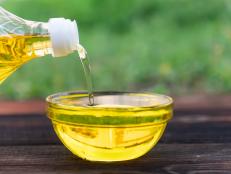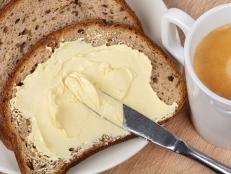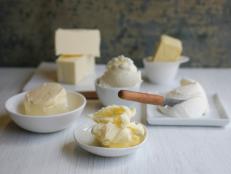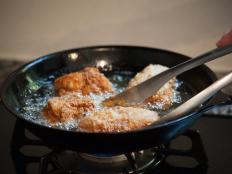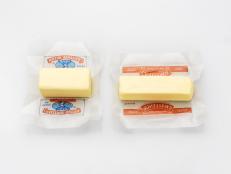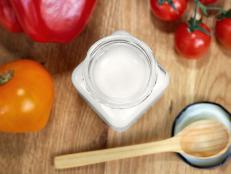What Is Extra Virgin Olive Oil?
Extra virgin olive oil, affectionately known as EVOO, is a pantry staple. Why does it come in smaller bottles and cost more than regular olive oil? It all has to do with how the olives are pressed to extract the oil that goes into the bottles.

dulezidar/Getty Images
By Fraya Berg for Food Network Kitchen
Fraya is a chef and a contributing writer at Food Network.
Extra virgin olive oil - what does that really mean? How can anything be extra virgin? What makes it more virgin than regular virgin olive oil? And what is olive oil that doesn't have a virgin label at all? We’ve got the info to help you decide which one is best for you.
What Is Extra Virgin Olive Oil?
Extra virgin olive oil is highest quality, most flavorful and most expensive type of olive oil because it's unrefined--never heated or processed with chemicals. It has rich, grassy color and peppery flavor and is ideal for drizzling over finished dishes or for dipping bread into.
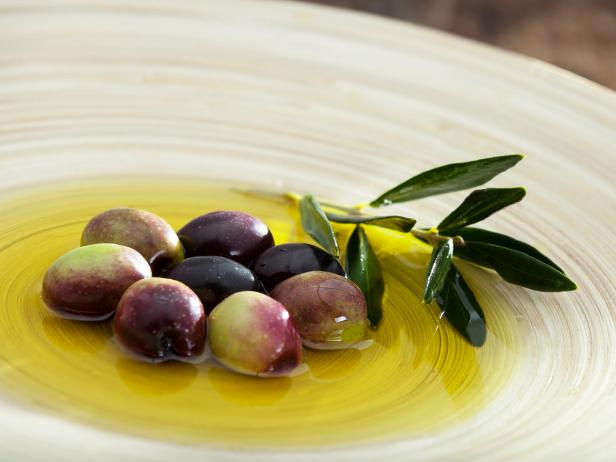
fatihhoca/Getty Images
What Is the Difference Between Olive Oil and Extra-Virgin Olive Oil?
Unlike extra virgin olive oil, regular olive oil is a lower grade of oil that's been refined, or heated and processed with chemicals. It has a more nuetral flavor, lighter color and is less expensive.
Let's understand the differences better, let's briefly chat about how olive oil is made.
When ripe olives are harvested, they are ground up and pressed much the same way grapes are pressed in the wine making process.
With the best olives, the crushing and the pressing take place at room temperature (called cold pressing). At this point, the cold-pressed olive oil is either virgin or extra virgin. Olive oil authorities taste the olive oil, checking the amount of acidity and running down a list of strict, regulated criteria to determine which label the oil will receive. Only the best is allowed to be labeled extra virgin olive oil. The remaining olive oil is labeled virgin olive oil. Any bottle with the words "virgin olive oil" on its label has not been exposed to heat and has not been refined.
After the cold pressed oil has been extracted from the mashed olives, there’s still plenty of oil left. At this point, the leftover mash (called pomace) is put in vats with extraction chemicals and is heated to extract more oil. The chemicals are all removed, and what’s left is labeled as plain olive oil.

AlexPro9500/Getty Images
What Is Extra Virgin Olive Oil Used For?
Extra virgin olive oil can be used anywhere oil is called for, but just because it can be, doesn’t mean it should be. EVOO is expensive and packed with fruity or grassy flavors: everything good that came out of the olive in the first cold press. If you heat it to the temperature required for a very quick sauté, you’ll be destroying all the qualities that make it extra virgin olive oil. You can, in fact actually see this: it will lose its beautiful green color and turn pale yellow - the same color as regular olive oil.
Extra virgin olive oil is best when it’s drizzled over a dish after it’s cooked, so the flavor of the oil is highlighted. Or use your EVOO when you make a vinaigrette: the oil is the major ingredient, and it maintains its acidity and distinctive olive flavor. A basket of bread and a little saucer of extra virgin olive oil for dipping at everyone’s place at the table is one of the best ways to appreciate the oil’s subtleties. As you can see by the recipe choices below, extra virgin olive oil is great in pesto, mashed potatoes and pastas.
If you want to use olive oil for frying and high heat sautés, reach for bottles labeled with "olive oil" or "light olive oil." These products were heated during the refining process, so you won’t be changing it or losing flavor in a hot skillet. Light olive oil is even further refined than regular olive oil to remove more color and flavor.
How to Store Extra Virgin Olive Oil
All olive oil should be stored in a cool, dark place, and extra virgin olive oil is no exception. Because it has a shelf life, it’s best to buy smaller bottles more frequently and use them more quickly. It might be convenient to keep a bottle near the stove, but that’s a sure-fire way to shorten the life of extra virgin olive oil. Some producers go so far as to wrap their bottles in foil to keep all the light away from the oil in the bottle. If you receive a gift of extra virgin olive oil, please do not save it for a special occasion. Your enjoyment of it is the occasion, so use it within two to three months of opening it.
Extra Virgin Olive Oil Health Benefits
The more we learn about plant-based diets, the more you’ll hear about the health benefits of extra virgin olive oil. Monounsaturated fatty acids are in the ‘good’ fats, and olive oil has a high level compared to other oils. Using olive oil may help lower your cholesterol, but for that to happen, you have to use it instead of butter, not in addition to butter. Antioxidants are another plus olive oil brings to the table. If you're still curious about the health benefits of olive oil, head over to the olive oil story from Food Network's nutritionist, Dana Angelo White, M.S., R.D., A.T.C.
Extra Virgin Olive Oil Recipes

When a spaghetti recipe has so few ingredients, every one of them needs to be the best, with the most flavor. The extra virgin olive oil is no exception.
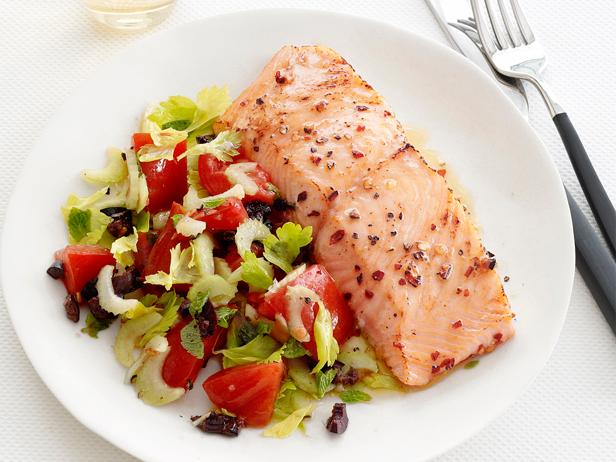
Salmon with a tomato salad gets a double dose of extra virgin olive oil: on the salmon and in the salad. If you have two bottles and one is more flavorful, use the better one for the salad.

Johnny Miller
You may wonder why this recipe for Nicoise salad uses 3/4 cup of extra virgin olive oil, but this classic salad has many components that need to be dressed! Be sure you buy the very best tuna you can find, usually the one in a jar.

RYAN DAUSCH
If olive oil cake hasn’t been on your radar until today, bake this cake and save the recipe. You won’t be sorry: the olive oil imparts fruity flavor and incedible moisure.
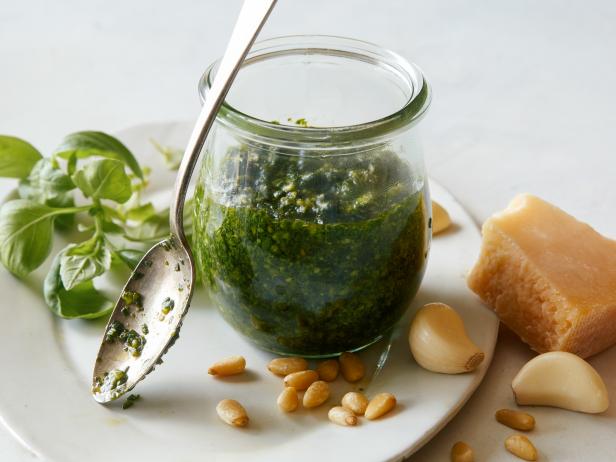
Teri Lyn Fisher
No collection of extra virgin olive oil recipes would be complete without Basil Pesto. The olive oil brings all the ingredients together, but be sure you don’t over puree the mixture, or the basil will develop a grassy taste.
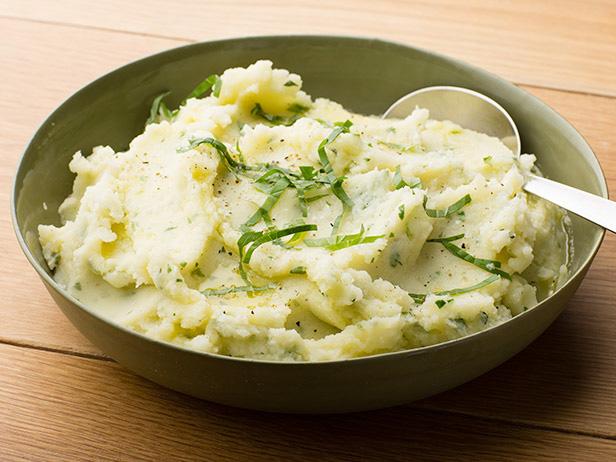
When extra virgin olive oil stands in for butter in mashed potatoes, it’s a win-win. The flavor of the olive oil shines, and on the off chance you need a vegan dish at the last minute, you’re set.
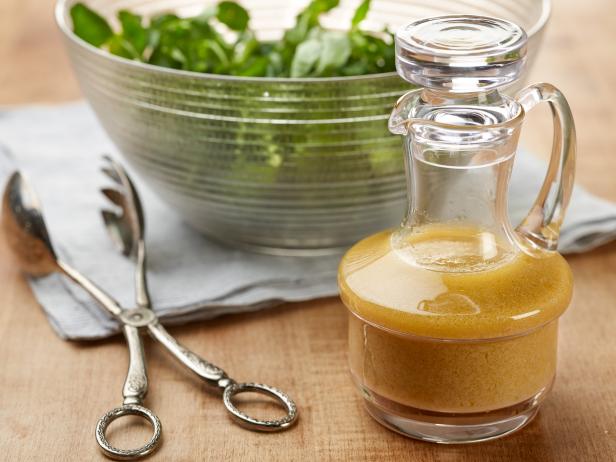
Renee Comet, 2013, Television Food Network, G.P. All Rights Reserved
This recipe for Simple Vinaigrette follows the classic 3:1 ratio of oil to acid; in this case, the ingredients are extra virgin olive oil and your choice of vinegar. If you always remember 3:1, you’ll be able to make vinaigrette without an actual recipe forever.
Related Recipes:


























